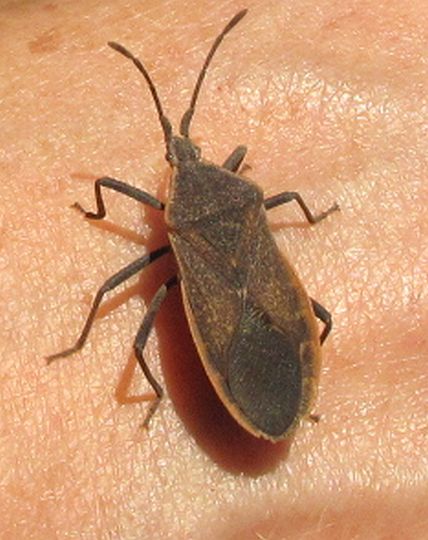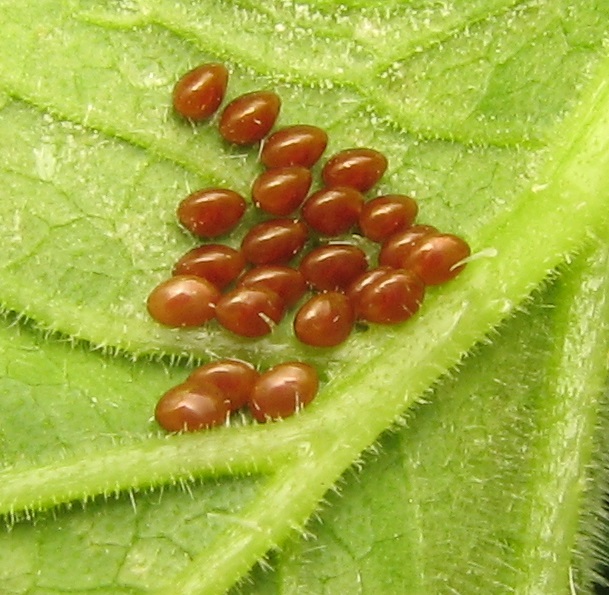Summary of Squash Bugs (Anasa tristis)
Identification:
Adult Squash Bug: Adults are about 5/8 inch long, brownish-black, and have a flat back with a shield-like shape.

Squash Bug Eggs: Eggs are bronze-colored, elliptical, and laid in clusters on the undersides of leaves.

Squash Bug Nymphs: Nymphs are light gray with black legs and progress through five stages, growing darker and larger with each molt.
Prevention:
- Crop Rotation: Avoid planting squash or related plants in the same location each year to disrupt the squash bug life cycle.
- Clean Garden Practices: Remove plant debris and weeds where squash bugs might overwinter.
- Companion Planting: Planting crops like marigolds or nasturtiums can help repel squash bugs.
- Physical Barriers: Use row covers to protect young plants from squash bugs. Remove the covers when plants start to flower to allow for pollination.
- Trap Crops: Planting a few squash plants early to act as trap crops can attract squash bugs away from the main crop. Destroy the trap plants once they are infested.
Treatment:
- Handpicking: Regularly inspect plants and handpick squash bugs, eggs, and nymphs. Drop them into a bucket of soapy water to kill them.
- Neem Oil: Apply neem oil to infested plants. Neem oil acts as a repellent and disrupts the life cycle of squash bugs.
- Insecticidal Soap: Spray insecticidal soap on nymphs, as it can be effective in controlling younger stages of squash bugs.
- Diatomaceous Earth: Sprinkle diatomaceous earth around the base of plants. It can help deter squash bugs by damaging their exoskeletons.
- Chemical Insecticides: As a last resort, use insecticides labeled for squash bugs. Be sure to follow the manufacturer's instructions and apply during the early morning or late evening to minimize harm to beneficial insects.
Monitoring and Early Detection:
- Regular Inspections: Check plants at least once a week, focusing on the undersides of leaves and the base of plants.
- Egg Removal: Scrape off egg clusters with a fingernail or a piece of tape to prevent hatching.
By combining preventive measures and timely treatments, you can effectively manage squash bug populations and protect your squash plants from damage. Regular monitoring and quick action are key to keeping infestations under control.
